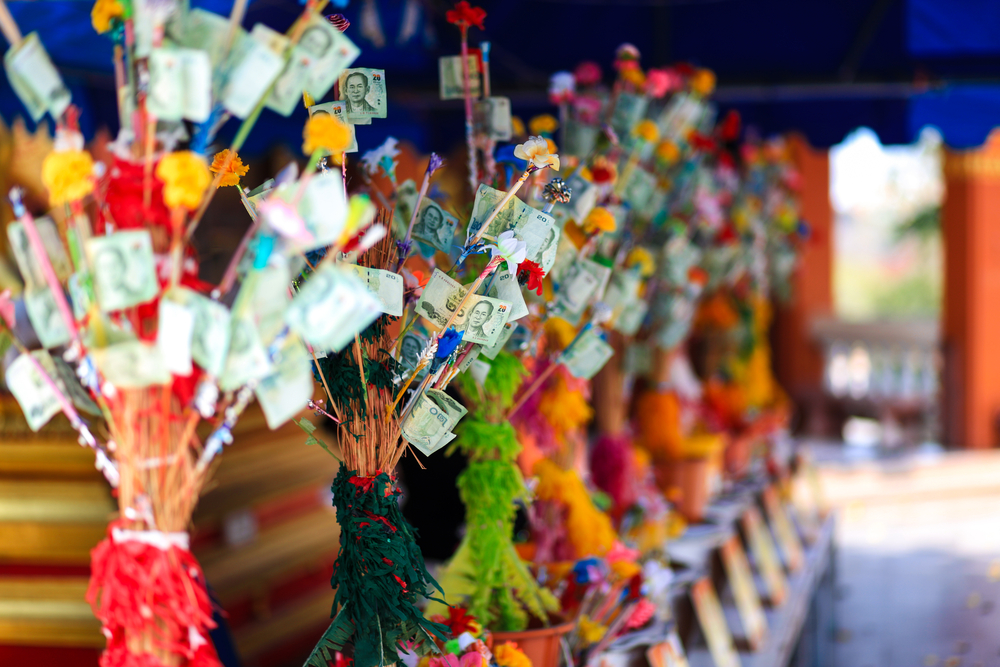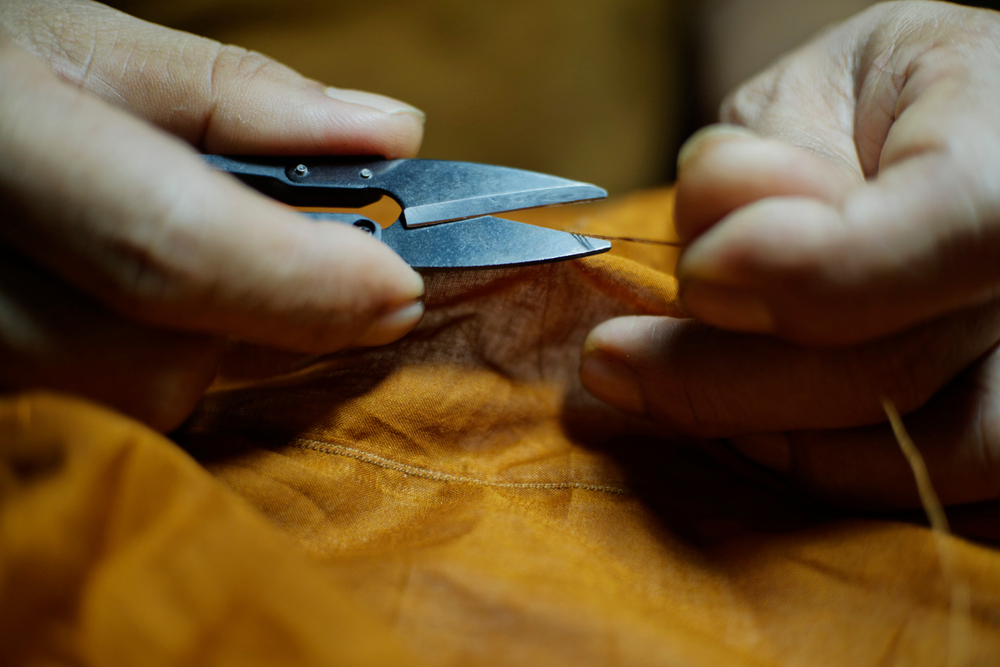Kathina refers to the offering of the special robe (Kathina civara) prepared and presented to monks who have completed the three-month period of retreat called Vas in Sinhala, and Vassana in Pali, meaning the period of rain.
Kathina literally means ‘firm,’ or ‘solid,’ because the offering of a Kathina robe helps to earn solid good karma.
The Kathina Ceremony is over 2500 years old. It is a monastic tradition preserved and observed by Buddhists all over the world because it is an extraordinary opportunity to acquire merit once a year.

One of the stanzas chanted during Kathina glorifies the greatness of the merit which one gets from performing Kathina. It says that even this solid earth, or a solid rock or a piece of diamond could tremble, shake and break at times. However, the merit obtained by offering of Kathina cannot be nullified by anything until one achieves the ultimate goal of Buddhist aspiration which is Nirvana.
Kathina ceremony often involves a procession carrying the new robes along a pre-arranged route to the designated temple, sometimes headed by monks from this temple. There is no specific date for the ceremony, and it depends on arrangements at individual temples, but generally, the kathin ceremonies are held within a one-month period from the end of Buddhist Lent.

Thot Kathin means “to lay down a wooden frame on which to cut cloth.”
In the past, the cloth for the robes would be patched together from cast off pieces. Today, they are made of new cloth that consists of 14 patches sewn together to make rectangular garments. 2 of the garments are 10 feet long and 6.5 feet wide and the third cloth is narrower by half.
The 3 robes are
As the legend goes, thirty bhikkhus were journeying with the intention of spending Vassa with Gautama Buddha.
However, the rains began before they reached their destination and they had to stop at Saketa. According to Buddha's guidelines for Vassa, mendicant monks shouldn't travel during the rainy season as they may unintentionally harm crops and/or insects during their journey. As such, the monks had to stop.
The bhikkhus passed their time together without conflict and practicing Dhamma so afterwards, the Buddha rewarded the monks by demonstrating a way to practice sharing and generosity. A lay disciple had previously donated pieces of cloth to the Buddha, so the Buddha now gave the pieces to the group of monks and told them to make it into a robe and then offer it as a gift to one of them.
A frame, called a Kathina, was used to hold the pieces while they were being made into one robe.

